Thingiverse

19th-Century Hog Scraper by smlee
by Thingiverse
Last crawled date: 3 years ago
Hog Scrapers: Making Pork Rinds since the 19th Century
======================================================
This hog scraper has a story to tell. It was used to scrape the bristles off the outside of a butchered hog hide. Though it is difficult to see in the scan, the broad side of the hog scraper has four dull metal blades that function much in the way a modern shaving razor blade does. This particular hog scraper was manufactured in North Carolina and was likely partially handmade and partially machine crafted. It was probably used by a craftsman in the state sometime in the 1800s. This particular object is unique because of the sturdiness and detailed craftsmanship involved in its creation. The handle was likely made in a machine, most likely a machine that made table or chair legs. However, the joints on the object look hand-placed. The original hog scraper is in the collections of the North Carolina Museum of History (Accession # 1966.66.426).
Methods/Instructions
In order to 3D scan this artifact, we used two different technologies to create two different kinds of scans (both included in our object files). For our first set of scans, we used a repurposed Kinect sensor which was then linked to a laptop. Using Skanect software, we edited the scans. In order to use this method, we first attempted to stand the artifact on a Lazy Susan, but because of the fragility of the artifact, we instead had to improvise. Instead, two users held the laptop and the sensor and moved around the object, allowing the sensor to pick up the data. For our second set of the scans, we used an iPad software application, Structure Sensor, to scan the artifact. Using this method, the user connects a Structure Sensor device to the iPad and slowly walks about the object, allowing the sensor to gather information about the object and send it to the application on the iPad. The iPad application then projects a real-time point cloud. As the scanner picks up more points, the object fills in.
Goals
When we set about scanning this artifact, we were hoping to create a 3D model that we could make widely available on the internet as a learning tool. Additionally, we wanted to furnish the museum with a scan that they could utilize on their website or theoretically 3D print in order to create an educational tool. We envisioned a 3D printed hog scraper allowing visitors to handle and explore the tool without creating a danger to the object or to the visitor. Additionally, a 3D scan would allow the museum to keep a more thorough and long-lasting record of the object. Lastly, we wanted to contribute to making North Carolina history more interesting, interactive, and innovative.
Podcast
Listen to our interpretive podcast.
Secondary Sources
Avirett, James. The Old Plantation: How We Lived In the Great House and Cabin Before the War, annotated and illustrated. Amazon Digital Services: 2011.
Bishir, Catherine. Crafting Lives: African American Artisans in New Bern, North Carolina, 1770-1900. University of North Carolina Press, Chapel Hill, NC: 2013. Accessed via North Carolina State University’s library website.
“From Pig to Pork Chop: How Our Ancestors Brought Home the Bacon.” Accessed October 22, 2014. http://www.civilwarinteractive.com/ThisLittlePiggie.htm.
Furuseth, Owen J. “Hog Farming in Eastern North Carolina.” Southeastern Geographer. Vol. 41, Issue 1 (2001), 53-64. Accessed via North Carolina State University’s library website.
Furuseth, Owen J. “Restructuring of Hog Farming in North Carolina: Explosion and Implosion.” Southeastern Geographer. Vol. 49, Issue 4 (1997), 391-403. Accessed via North Carolina State University’s library website.
Learn NC. “The Life of a Slave.” Accessed October 22, 2014. http://www.learnnc.org/lp/editions/nchist-antebellum/5602.
Mettler, John. Basic Butchering of Livestock and Game. Storey Publishing, New York: 1986. Accessed via North Carolina State University’s library website.
Reidy, Joseph P. From Slavery to Agrarian Capitalism in the Cotton Plantation South: Central Georgia, 1800-1880. Chapel Hill: University of North Carolina Press, 1992. Accessed via North Carolina State University’s library website.
Weber, Tom. Stories in Stone: Memories of a Bygone Farming Community in North Carolina. Umstead Coalition: Raleigh, 2011. Accessed via North Carolina State University’s library website.
US EPA Agi Pork Production. Accessed October 22, 2014. http://www.epa.gov/oecaagct/ag101/printpork.html.
======================================================
This hog scraper has a story to tell. It was used to scrape the bristles off the outside of a butchered hog hide. Though it is difficult to see in the scan, the broad side of the hog scraper has four dull metal blades that function much in the way a modern shaving razor blade does. This particular hog scraper was manufactured in North Carolina and was likely partially handmade and partially machine crafted. It was probably used by a craftsman in the state sometime in the 1800s. This particular object is unique because of the sturdiness and detailed craftsmanship involved in its creation. The handle was likely made in a machine, most likely a machine that made table or chair legs. However, the joints on the object look hand-placed. The original hog scraper is in the collections of the North Carolina Museum of History (Accession # 1966.66.426).
Methods/Instructions
In order to 3D scan this artifact, we used two different technologies to create two different kinds of scans (both included in our object files). For our first set of scans, we used a repurposed Kinect sensor which was then linked to a laptop. Using Skanect software, we edited the scans. In order to use this method, we first attempted to stand the artifact on a Lazy Susan, but because of the fragility of the artifact, we instead had to improvise. Instead, two users held the laptop and the sensor and moved around the object, allowing the sensor to pick up the data. For our second set of the scans, we used an iPad software application, Structure Sensor, to scan the artifact. Using this method, the user connects a Structure Sensor device to the iPad and slowly walks about the object, allowing the sensor to gather information about the object and send it to the application on the iPad. The iPad application then projects a real-time point cloud. As the scanner picks up more points, the object fills in.
Goals
When we set about scanning this artifact, we were hoping to create a 3D model that we could make widely available on the internet as a learning tool. Additionally, we wanted to furnish the museum with a scan that they could utilize on their website or theoretically 3D print in order to create an educational tool. We envisioned a 3D printed hog scraper allowing visitors to handle and explore the tool without creating a danger to the object or to the visitor. Additionally, a 3D scan would allow the museum to keep a more thorough and long-lasting record of the object. Lastly, we wanted to contribute to making North Carolina history more interesting, interactive, and innovative.
Podcast
Listen to our interpretive podcast.
Secondary Sources
Avirett, James. The Old Plantation: How We Lived In the Great House and Cabin Before the War, annotated and illustrated. Amazon Digital Services: 2011.
Bishir, Catherine. Crafting Lives: African American Artisans in New Bern, North Carolina, 1770-1900. University of North Carolina Press, Chapel Hill, NC: 2013. Accessed via North Carolina State University’s library website.
“From Pig to Pork Chop: How Our Ancestors Brought Home the Bacon.” Accessed October 22, 2014. http://www.civilwarinteractive.com/ThisLittlePiggie.htm.
Furuseth, Owen J. “Hog Farming in Eastern North Carolina.” Southeastern Geographer. Vol. 41, Issue 1 (2001), 53-64. Accessed via North Carolina State University’s library website.
Furuseth, Owen J. “Restructuring of Hog Farming in North Carolina: Explosion and Implosion.” Southeastern Geographer. Vol. 49, Issue 4 (1997), 391-403. Accessed via North Carolina State University’s library website.
Learn NC. “The Life of a Slave.” Accessed October 22, 2014. http://www.learnnc.org/lp/editions/nchist-antebellum/5602.
Mettler, John. Basic Butchering of Livestock and Game. Storey Publishing, New York: 1986. Accessed via North Carolina State University’s library website.
Reidy, Joseph P. From Slavery to Agrarian Capitalism in the Cotton Plantation South: Central Georgia, 1800-1880. Chapel Hill: University of North Carolina Press, 1992. Accessed via North Carolina State University’s library website.
Weber, Tom. Stories in Stone: Memories of a Bygone Farming Community in North Carolina. Umstead Coalition: Raleigh, 2011. Accessed via North Carolina State University’s library website.
US EPA Agi Pork Production. Accessed October 22, 2014. http://www.epa.gov/oecaagct/ag101/printpork.html.
Similar models
thingiverse
free

19th Century Hogscraper by slvander
...nd listen to our historical podcast at:http://susannalee.org/dh/2014/10/23/hog-scrapers-making-pork-rinds-since-the-19th-century/
thingiverse
free

North Carolina with NC State logo by NotanAI
...lina with nc state logo by notanai
thingiverse
i added the nc state university logo to the model of the state of north carolina.
thingiverse
free

N.C. State Logo by mmadisonb
...n.c. state logo by mmadisonb
thingiverse
logo for north carolina state university
3dwarehouse
free

GSU Library north
...gsu library north
3dwarehouse
library north at georgia state university
3dwarehouse
free

NCSU logo
...ncsu logo
3dwarehouse
the atletic logo of north carolina state university
3d_export
$15
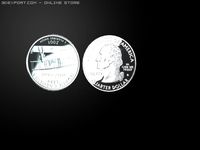
North Carolina State Quarter 3D Model
...d model
3dexport
north carolina state quarter coin us currency
north carolina state quarter 3d model maideninblack 21459 3dexport
3dwarehouse
free

Atkins Library
...ns library building on the campus of the university of north carolina at charlotte. #atkins #charlotte #library #uncc #university
3dwarehouse
free

Tennis Complex
...tennis complex
3dwarehouse
located at north carolina a&t state university
3dwarehouse
free

Marteena Hall
...marteena hall
3dwarehouse
located at north carolina a&t state university
3dwarehouse
free

Fort I.R.C.
...fort i.r.c.
3dwarehouse
located on the campus of north carolina a&t state university
Smlee
thingiverse
free

18th Century Butter Print: by smlee
....
[5] kindig, butter prints and molds, 86.
[6] kindig, butter prints and molds, 89
[7] kindig, butter prints and molds, 39.
thingiverse
free

19th Century Leather Children's Shoe: by smlee
...ttp://www.nps.gov/civilwar/search-soldiers-detail.htm?soldierid=9ee02cbf-dc7a-df11-bf36-b8ac6f5d926a (accessed october 30, 2014).
thingiverse
free
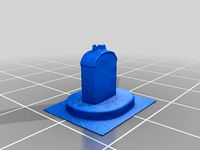
Tea Caddy Used at Edenton Tea Party in 1774 by smlee
...er house,” north carolina history project, accessed november 3, 2014, http://www.northcarolinahistory.org/encyclopedia/475/entry.
Hog
turbosquid
$30

hog
...quid
royalty free 3d model hog for download as blend and stl on turbosquid: 3d models for games, architecture, videos. (1291734)
turbosquid
$25

Huey Hog
... available on turbo squid, the world's leading provider of digital 3d models for visualization, films, television, and games.
cg_studio
$39

hog rider3d model
... of clans warrior
.max .3ds .obj .fbx .dwg - hog rider 3d model, royalty free license available, instant download after purchase.
cg_studio
$19
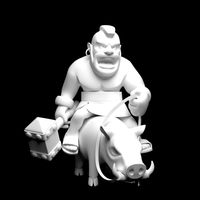
hog ride printable3d model
...rintable print 3dprint c.o.c
.stl - hog ride printable 3d model, royalty free license available, instant download after purchase.
3d_export
$12

bar hog
...bar hog
3dexport
3dsmax 2016<br>obj<br>maps
cg_studio
$10
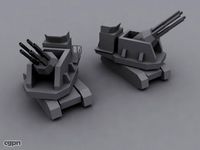
Hog Artillery Tank3d model
...e gaming
.3ds .dxf .lwo .max .obj - hog artillery tank 3d model, royalty free license available, instant download after purchase.
3d_export
$5
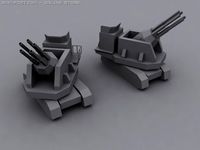
Hog Artillery Tank 3D Model
...ussian usa armor armed armored personal carrier military war zone gaming
hog artillery tank 3d model martialartist 24502 3dexport
3ddd
$1

TOPS KNIVES HOG 4.5
... клинок
боевой нож с фиксированным клинком,изготовлен по дизайну дэвида уильямса (david williams).
turbosquid
$20

Boar wild hog statue - PBR Low-poly
...3d br model low-poly for download as blend, max, obj, and fbx on turbosquid: 3d models for games, architecture, videos. (1632611)
turbosquid
$24

Beer Can 21st Amendment Marooned on Hog Island 12fl oz
... amendment marooned on hog island 12fl oz for download as max on turbosquid: 3d models for games, architecture, videos. (1178998)
Scraper
turbosquid
$1

Scraper
...turbosquid
royalty free 3d model scraper for download as stl on turbosquid: 3d models for games, architecture, videos. (1311169)
turbosquid
$15

scraper
...id
royalty free 3d model scraper for download as lwo and obj on turbosquid: 3d models for games, architecture, videos. (1220056)
turbosquid
$10

scraper
... available on turbo squid, the world's leading provider of digital 3d models for visualization, films, television, and games.
turbosquid
$8

Scraper
... available on turbo squid, the world's leading provider of digital 3d models for visualization, films, television, and games.
3d_export
$10

wheel scraper
...wheel scraper
3dexport
3d_export
$20

MS400 Scraper Conveyor
...t the head. the scraper chain bypasses the sprocket for a stepless closed cycle operation to complete the conveying of materials.
3d_export
$10
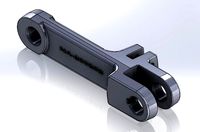
Scraper chain
...scraper chain
3dexport
t200 for chain conveyor
turbosquid
$20

Coconut Scraper
... available on turbo squid, the world's leading provider of digital 3d models for visualization, films, television, and games.
turbosquid
$20
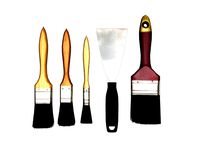
scraper and brushes
... available on turbo squid, the world's leading provider of digital 3d models for visualization, films, television, and games.
turbosquid
$10
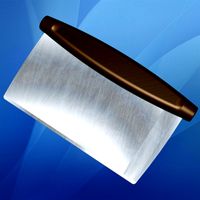
Bench Scraper
... available on turbo squid, the world's leading provider of digital 3d models for visualization, films, television, and games.
19Th
3ddd
$1
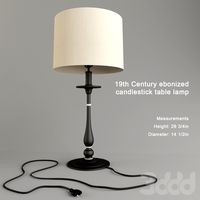
19th Century ebonized
...19th century ebonized
3ddd
19th century ebonized candlestick table lamp
measurements
height: 29 3/4in
diameter: 14 1/2in
turbosquid
$19

19th Century building
... available on turbo squid, the world's leading provider of digital 3d models for visualization, films, television, and games.
turbosquid
$1
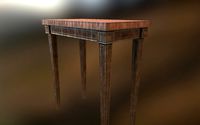
19th Century Table
... available on turbo squid, the world's leading provider of digital 3d models for visualization, films, television, and games.
design_connected
$18

French 19th c. Chaise A
...french 19th c. chaise a
designconnected
n/a french 19th c. chaise a armchairs computer generated 3d model. designed by n/a.
design_connected
$4

French 19th c. Table
...french 19th c. table
designconnected
n/a french 19th c. table coffee tables computer generated 3d model. designed by n/a.
3d_export
$25

Set of buildings of the 19th-20th century
...h century contains buildings in the entourage of the industrial revolution of the 19th-20th century, set consists of 5 buildings.
3ddd
free

19TH C. KEYHOLE METAL SQUARE
...19th c. keyhole metal square
3ddd
restoration hardware
19th c. keyhole metal square
turbosquid
$45

19th Century Bath House
...lty free 3d model 19th century bath house for download as fbx on turbosquid: 3d models for games, architecture, videos. (1682622)
turbosquid
$10
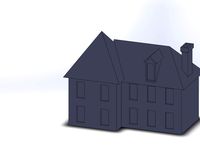
French Villa 19th Century
...y free 3d model french villa 19th century for download as stl on turbosquid: 3d models for games, architecture, videos. (1669905)
turbosquid
$17

19th C Bronze Gongs
...free 3d model 19th c bronze gongs for download as max and fbx on turbosquid: 3d models for games, architecture, videos. (1215544)
Century
3ddd
$1

Century Furniture
.../www.centuryfurniture.com/gallery/showitem.aspx?sku=639-532
century furniture dining room windowpane arm chair 639-532
3d_export
$7

mid century chair
...mid century chair
3dexport
mid-century type dining chair
turbosquid
$10

Century Chair
...free 3d model century chair for download as max, fbx, and obj on turbosquid: 3d models for games, architecture, videos. (1711388)
turbosquid
$20

Century Car
... available on turbo squid, the world's leading provider of digital 3d models for visualization, films, television, and games.
3ddd
$1

Century Furniture Saturn Chair
...century furniture saturn chair
3ddd
century furniture
century furniture saturn chair
3d_export
$65

century avenue
...century avenue
3dexport
simple rendering of the scene file
3ddd
free

Торшер Century Terra
...ra
3ddd
century terra
модель торшера century terra делалась в archicad`е. только провод был добавлен в максе, ну и рендер конечно
3ddd
$1

Стул Century Antiques
...стул century antiques
3ddd
стул фирмы century классический с текстурами и материалами. рендерено в максе+vray.
3ddd
$1
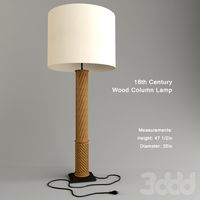
18th Century Wood
...18th century wood
3ddd
lucca antiques
18th century wood column lamp
measurements:
height: 47 1/2in
diameter: 20in
3ddd
free
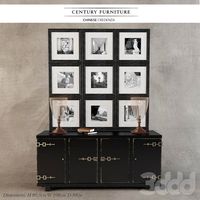
Комод Century furniture
...а: century furniture
модель: chinese credenza
артикул: 609-403
ширина: 198 см
высота: 89,5 см
глубина: 59 см
в архиве 3dsmax 2010
